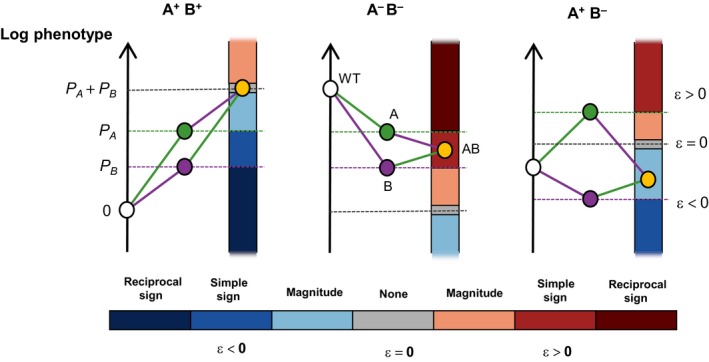Figure 6.

Categories of epistasis possible for different types of mutation pairs. “A” and “B” are mutations, and superscript “+” and “−” denote that these individual mutations increase or decrease the value of the measured phenotype, P. In all cases, the white point is wild type and the orange point is the AB double mutant. Grey dashed line marks the sum of P A and P B, that is the expected value for the double mutant. Epistasis measures the deviation from this expectation, which may be either negative or positive, and can be categorized as either magnitude (the direction of mutational effects do not depend on the other mutation) or sign type. Sign epistasis can be further categorized as simple (effect of one mutation changes sign in the presence of the other) or reciprocal (effects of both mutations change sign in the presence of the other). The three examples shown are (left‐right): no epistasis between a pair of positive‐effect mutations, positive simple sign epistasis between a pair of negative‐effect mutations, and negative magnitude epistasis between a positive‐effect and negative‐effect mutation
